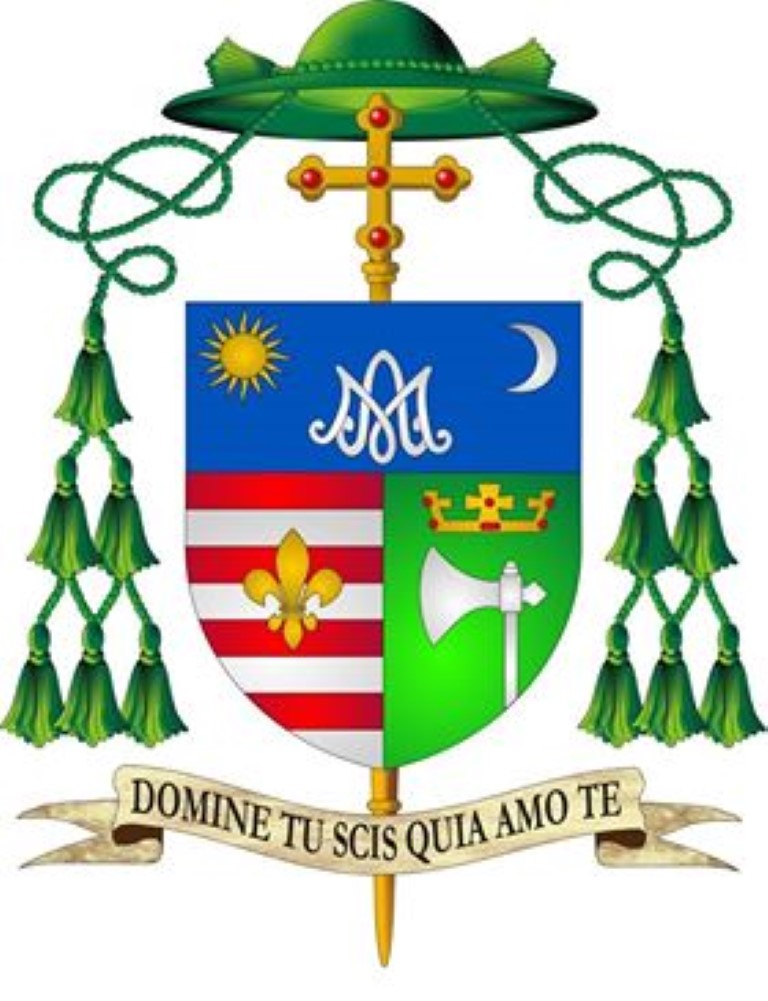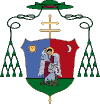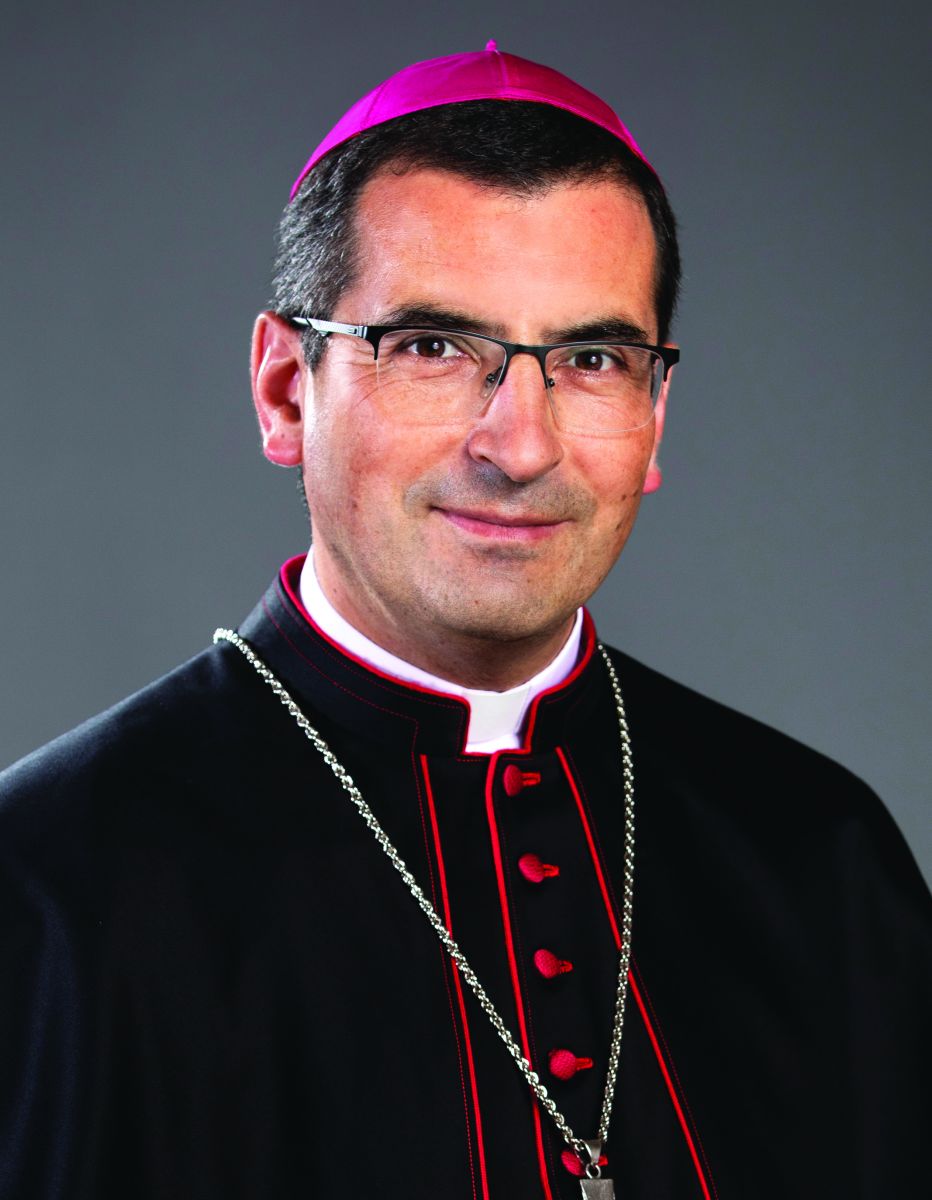His Excellency and Most Reverend
Dr. László Kerekes
Auxiliary Bishop, Titular Bishop of Tharros
Pope Francis appointed Reverend Dr. László Kerekes, parish priest in Târgu Secuiesc (Roman Catholic Parish of Eusebius of Esztergom), as the Titular Bishop of Tharros and the Auxiliary Bishop of the Roman Catholic Archdiocese of Alba lulia on 26 May 2020, on the Feastday of Saint Philip Neri. He was ordained as bishop on 29 August 2020 in the Franciscan Church of Șumuleu Ciuc. Ordaining bishops: Archbishop Dr. Gergely Kovács, Archbishop Emeritus Dr. György Jakubinyi. Auxiliary Bishop Emeritus József Tamás.
László Kerekes was born on 23 July 1968 in Târgu Secuiesc (but his hometown was Ghelința). He started his studies in Ghelința, continued in Târgu Secuiesc and finished in Alba Iulia at the Theological Lyceum. In 1987 he started his philosophical and theological studies at the Faculty of Roman Catholic Theology in Alba Iulia, then continued in 1990 and finished in 1992 as the student of the Central Institute for Priestly Education in Budapest. He was ordained as priest on 16 May 1993 in Ghelința, in the Church of Saint Emeric of Hungary.
In 1994 he obtained Licentiate in Canon Law and in 2004 Doctoral degree in Ecclesiastical Law at the Saint Paul University in Ottawa (Canada).
During his twenty-six-year-old priesthood, Dr. László Kerekes served in many pastoral roles: between 1994-2000 he was the judicial vicar of the Archdiocesan Tribunal of Alba Iulia, the prefect and Canon Law teacher of the Faculty of Roman Catholic Theology in Alba Iulia and from 1996 he taught Rhetoric, Homiletics and Pedagogy. He was also the co-author of the scientific publication of the Faculty of Roman Catholic Theology of Alba Iulia, the so-called Studia Theologica Transsylvaniensia.
At the time of his episcopal appointment, he was deputy judicial vicar of the Archdiocesan Tribunal of Alba Iulia, and since 2004 he has been the parish priest of the Parish of Eusebius of Esztergom in Târgu Secuiesc. Besides his mother tongue, he fluently speaks Romanian and English.
His episcopal motto:
“Domine, tu scis quia amo te” i.e. “Lord, you know that I love you.” (John 21:15–17)
–Saint Peter’s response to Jesus when he asked him “Do you love me?”
Saint Peter knew his own weaknesses and sins but he also knew how much he adores his Master. That is the reason he trusts Jesus: he does not have to prove how much he loves Jesus, because Jesus knows him and his love.
At so many turning points, situations of our lives Jesus ask us, ask me: “Do you love me?”. Our decisions, everything that we do, is the proof that we love Jesus, we love his mystical Body, the Church, we love God’s people with its leaders and believers. Our Christianity is a great love-decision for Jesus Christ.

Explanation of His Excellency’s Episcopal Coat of Arms:
This Coat of Arms has three different parts. The first part with the blue background, like in the old Transylvanian coats of arms, with the monogram of the Blessed Virgin Mary, and with the Sun and Moon, expresses the strong trust in our Blessed Virgin Mary. Mary always took care and protected our country. Only with Her attitude can we walk the path of following Christ.
The second part refers to Ghelința. The green background and the princely crown symbolize Saint Emeric of Hungary, patron saint of Ghelința, who, by his prayerful and pure life, will be always an example and refuge of those who rely on him. Here we can see an axe too, representing Ladislaus I of Hungary, the patron saint. His perseverance and way of life is a great symbol of becoming Christian and Hungarian.
In the third part we can find a scout lily. It is the symbol of the scout ideology, of loving God, our fellow man and our country, but together with the Ten Scout Laws, also symbolizes the protection of the whole created world. It is the positive evaluation of the evangelical values, like sincerity, sense of duty, helpfulness, fraternity, acceptance of others, protection of the created world, respect and obedience to superiors, happiness and wisdom, purity and thrift. The red and white stripes behind the lily refer to our first kings, who have lived their lives and have led our nation in the Pannonian Basin according to Catholic Christian values. In these common values roots scouting too.
With the attitude of our Blessed Virgin Mary, with the way of life of Saint Emeric of Hungary and Ladislaus I of Hungary, and by preserving the Catholic Christian values, we can give our love-response to Jesus Christ.




